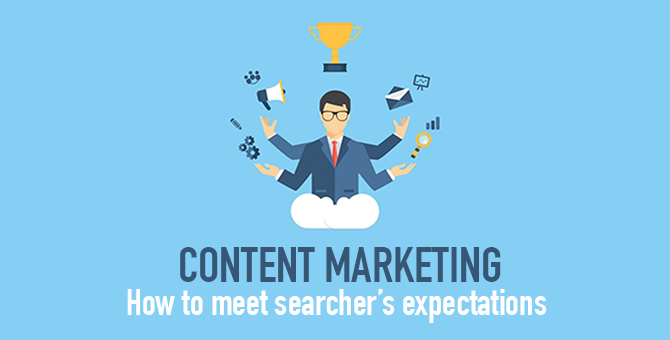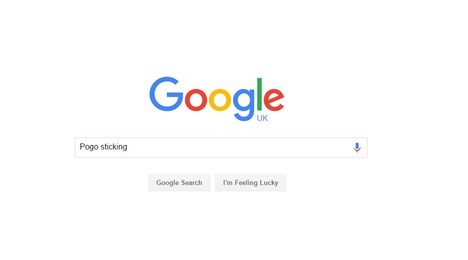Content Marketing – How to Meet Searchers Expectations

Content is not King. Search engines only care about your content in so far as it answers searchers questions. In the last few years especially, the web has become one huge answering machine. People query search engines and search engines attempt to answer these questions by providing results. Simple. Not really.
As we saw in the introduction to semantic search article – A search engine takes our queries, tries to understand the words, and delivers the same results a human would – the same results a friend would give you. And not just any friend, a close friend. A friend who understands you, who knows your current and previous locations, who knows your tastes and preferences and most importantly, knows your intentions.
These days, your website doesn’t just have to target keywords, you need to meet, match and exceed searcher’s expectations. To achieve this you have to understand your target audience better than ever before.
You need to understand the kinds of questions they have and, most importantly, provide them with enough information that they will not have to pogo-stick back to the search engine results pages (SERPs).
This pogo sticking can have a dramatic effect on rankings.
Pogo sticking, Long and Short Clicks
A long click is a sign of user satisfaction. It’s a sign of expectations and intentions being met.
Many people mistakenly confuse a ‘long click,’ with low bounce rates. Although the two metrics do have some correlation, they are still very different.
Popular resource pages (think Wikipedia & Stackflow) and blogs often have high bounce rates. People come in, find what they need and leave again. Or in the case of blogs, they read the latest post and leave.
They have no need to carry on searching. And that is the key. Their intentions have been met.
They have no need to ‘pogo-stick’ back to the search results and click on other results.
This pogo-sticking is an easy metric for Google to calculate and keep track of. It also provides a very clear indication of user satisfaction.
When a user is actively choosing another website from the SERPs to get the information they are looking for, this shows Google that your content is not good enough and doesn’t deserve to rank for those queries. It also shows Google which websites should be ranking above yours.
If this becomes a common occurrence on your landing pages, search engines will notice these short clicks and your rankings will decrease. (this natural voting system is far more transparent in PPC and makes up a large part of the Quality Score).
How do you Match and Exceed Searcher’s Expectations?
In our semantically themed world, you have to understand your clients, understand their questions, their queries, you need to know what goes on in their heads. First and foremost, you should put yourself in their shoes.
What questions would they have before taking a decision?
A good exercise is to get a piece of paper and write down the most common questions you hear from your clients. Get everyone involved, ask all the members of your team for their feedback.
Break these queries down for each one of your products and/or services and then look at your existing content. Are you addressing these questions? Are you addressing them fully? Would users need to go somewhere else to get the information they need? – to one of your competitors.
This ‘completeness’ is so important these days. It’s the difference between a long and short click.
Optimising Existing Content
Cyrus Shepard wrote a brilliant article – one that sums up perfectly what we’ve been doing at Artemis.
When you already have traffic coming to a website and have some information to work with, the place to start is Google’s Search Console.
Pick a few underperforming pages. I tend to pick ones that drive some traffic, but could/should drive more, ones that often rank on the second page of SERPs and have low click-through-rates.
Select the individual pages, adjust the timeframe to the maximum 90-day of queries and filter by impressions. These are the queries that are landing on your page and they often give you great insight into people’s intentions.
Sometimes it’s not immediately clear and you need to dig around a bit, but usually, you’ll find a true mine of information.
Does the Content on your Page Satisfy User Intent?
There are various ways to address this. And we’ll be covering them in later articles.
A quick fix is to amend title tags and meta descriptions. By including these big traffic driving queries in your title tag (particularly near the beginning) or within the meta description, you will increase click-through-rates and drive more traffic. At least in the short term.
But remember, this traffic needs to be sustainable and you need to aim for long clicks.
It’s very important that title tags and meta descriptions are not deceptive. They need to fairly reflect what a user is going to find on that page. If they don’t, people will quickly bounce off, ‘pogo-sticking’ back to the search results, causing the whole page to lose rankings.
A far better solution is to provide real value to searchers. By having the best content, by being helpful and answering all their questions clearly and fully.
Content is no longer King. The new King is the long click.



